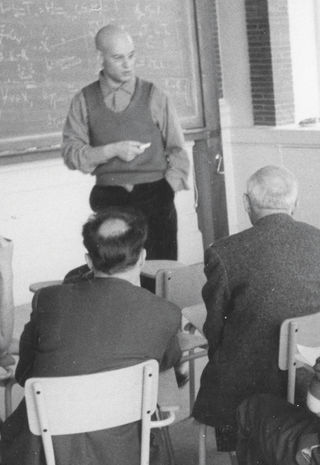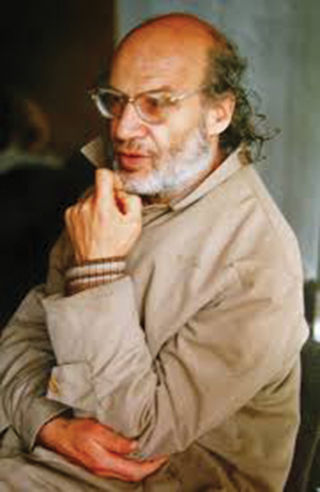The Mad Genius Mystery
Alexander Grothendieck was among the greatest mathematicians of the 20th century, until he withdrew from the world. Neuroscience may finally shed light on why epoch-changing minds make drastic midlife turns.
By Kaja Perina published July 4, 2017 - last reviewed on November 22, 2023
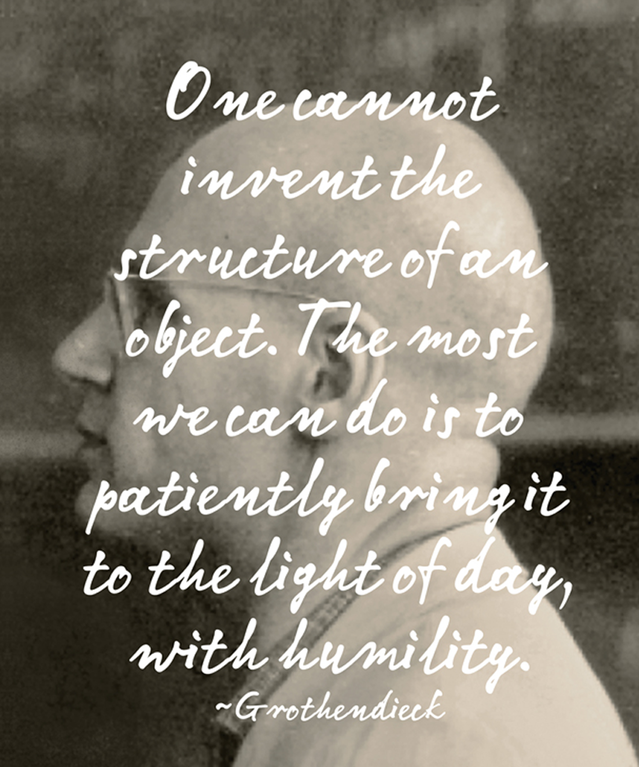
The tiny village of Lasserre is tucked into one of France's southernmost hills, a hamlet of stone buildings strong in the embrace of centuries-old cement. The home in which the mathematician Alexander Grothendieck spent the last two decades of his life in near-complete seclusion is as tranquil as its neighbors. A patchwork of vines—trained, then abandoned—climb toward the white shutters and terracotta roof. Among the few postwar sentries is a standard-issue metal mailbox. Visitors left mostly unclaimed notes for him; letters via post were marked retour a l'envoyeur. The locals knew to leave him alone, but when a young mathematician arrived in the early 1990s in hopes of speaking to him, he slammed the door in her face, screaming.
Grothendieck burned many of his papers in 1991, just before moving to Lasserre, though tens of thousands of unpublished pages remain. For years before his death in 2014, at age 86, he could be seen through a ground-floor window, writing long into the night. The pages revealed an obsession with environmental apocalypse. He was said to rave to locals about God and the devil and to have renounced all his mathematical work. This remains hard to accept for many who knew him. To them, he was the greatest mathematician of the 20th century.
Alexander Grothendieck altered mathematics with a velocity that is hard to
articulate, so abstruse is his work. He used commutative algebra to solve complex geometrical problems and laid the groundwork for solutions to the Weil conjectures and to Fermat's last theorem. He innovated in pure mathematics, but his work has applications in cryptography and coding theory. Using tools from algebraic geometry, category theory, and topology, he created an entirely new paradigm.
From the moment he entered mathematical circles in the late 1940s, he eclipsed his teachers and astounded his peers. "I did not view him as I did other great mathematicians, who were made of the same fabric—better fabric, to be sure, as they were brighter, faster, harder workers," explains French mathematician Michel Demazure in a tribute published last year in Notices of the American Mathematical Society. "Grothendieck always seemed essentially different; he was an 'alien.'"
"My first impression on seeing him lecture was that he had been transported from an advanced alien civilization in some distant solar system to visit ours in order to speed up our intellectual evolution," echoes Marvin Jay Greenberg, a professor emeritus of mathematics at the University of California at Santa Cruz.
Grothendieck's mindset embodied what polymath Alan Turing described as mathematical reasoning itself, "the combination of two facilities, which we may call 'intuition and ingenuity.'" Grothendieck's approach was to "dissolve" problems by finding the right level of generality at which to frame them. Mathematician Barry Mazur, now at Harvard, recalls conversations with Grothendieck as having been "largely, perhaps only, about viewpoint, never about specifics. It was principally 'the right vantage,' a way of seeing mathematics, that he sought, and perhaps only on a lesser level its byproducts."
Grothendieck's unique vantage point and thought style contributed to his genius. But they were also his undoing. The prospect of mathematical madness has been debated ever since Pythagoras, often described as the first pure mathematician, went on to lead a strange cult. Isaac Newton, Kurt Goedel, Ludwig Boltzmann, Florence Nightingale, and John Nash all attained mathematical prominence before succumbing to some type of psychopathology, including depression, delusions, and religious mysticism of the sort engendered by psychosis.
And yet there are no bulletproof data correlating mathematical ability and mental illness, leading many to dismiss the connection as romantic conjecture. Grothendieck's life is an outsize example of this controversy: There are people still too saddened by his final decades to discuss them; those who attribute his erratic, reclusive behavior to his upbringing and those who argue that he defies categorization altogether. Thanks to advances in the nascent field of creativity-psychopathology neuroscience, there is a converging body of work that may illuminate why some—but not all—brilliant mathematicians devolve into disordered states.
Thinking styles lie on a continuum. On one end is mechanistic, rule-based thinking, which is epitomized in minds that gravitate to math, science, engineering, and tech-heavy skill-sets. Mechanistic cognition is bottom-up, concerned with the laws of nature and with objects as they exist in the world, and stands in contrast to mentalistic thinking. Mentalistic cognition exists to decode and engage with the minds of others, both interpersonally and in terms of larger social forces. It is more holistic (top-down) and humanistic, concerned, broadly speaking, with people, not with things. This mindset makes loose, sometimes self-referential inferences about reality. If "hypermentalistic," too much meaning will be attributed to events: All coincidences are meaningful and all events are interconnected.
Every mind lies somewhere on this diametric cognitive spectrum. And as with many spectra, at each extreme the signature thought style is dialed up too high to be fully functional. Autism, in this conceptualization, is an extreme form of mechanistic thinking. It stands in contrast to psychotic disorders, characterized by false beliefs in the sentience of inanimate objects and delusions about the self and others. Reading minds is the lingua franca of mentalistic cognition, and symptoms of psychosis are essentially mind-reading on steroids.
Extreme cognitive styles map onto genius in that autism is in some cases associated with high intelligence. General intelligence, after all, includes the ability to quickly master rule-based, highly abstract thinking. And psychotic spectrum disorders, including bipolar disorder, schizotypy, and schizophrenia, are disproportionately diagnosed in highly creative individuals (they've been most often measured in artists, musicians, and writers) or in their first-degree relatives. Grothendieck's broad-spectrum thought style represents both off-the-charts intelligence and unparalleled creativity. It is within this rarified space that genius may reside. And the overshoot toward either pole—or to both—may, by the same token, engender mental illness.
The minds of brilliant mathematicians are of perennial fascination. But in the onrushing era of synthetic neurobiology and genomic reconfiguration, the possibility that genius and mental illness are intertwined takes on monumental significance. If scientists are eventually able to alter living brains or edit human embryos with an eye to mitigating conditions such as autism and schizophrenia, do we risk excising brilliant outliers from the gene pool? Isaac Newton, John Nash, and Alexander Grothendieck are low-frequency, high-impact minds; they advanced civilization in the domain on which they trained their high beams. It is worth turning the high beams of scientific inquiry on those same unusual minds.
Grothendieck's life limned the tragedies of twentieth-century Europe. His father, Alexander Schapiro, was a Russian Jew who, as an anarchist during the Bolshevik revolution of 1905, endured an ordeal that could be described as super-Dostoyevskian. Dostoyevsky was placed in front of a firing squad once, but Schapiro, then a teen, was taken prisoner by the tsarist regime and led to his execution every day for three weeks, only to be given a last-minute reprieve each time. Schapiro was the only one of his confreres spared, probably because of his age. He received a life sentence but escaped after one decade—and missing his left arm.
Grothendieck's mother, Hanka, from whom he took his surname, was a married German journalist and writer. Schapiro is said to have met her in Berlin and announced to her husband, "I will steal your wife." Five years later, the lovers and their son, nicknamed "Shurik," fled Nazi Germany and became stateless residents of France.
After a provincial wartime education, much of it spent in an internment camp, Grothendieck discovered his mathematical abilities as a first-year undergraduate at the University of Montpellier, where he independently formulated a tenet known as the Lebesgue integral. "Without even knowing it, I learned by myself the core elements of a mathematician's work—elements that no teacher can really teach," he wrote years later. His first true breakthrough occurred when he was asked by his Ph.D. advisor, himself a recipient of the Fields Medal, math's most prestigious prize, to tackle 14 unsolved problems. Within a year Grothendieck had solved them all. His reputation blossomed, and he reigned in the Bourbaki group, a postwar consortium intent on remaking mathematics.
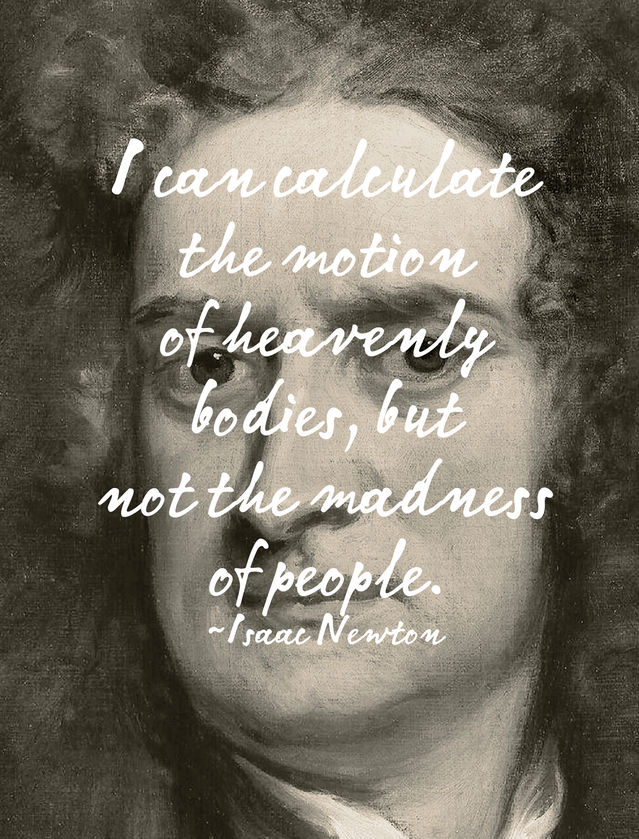
In the 1950s Grothendieck bore a physical resemblance to the young Marlon Brando, with a sensuous mouth and beatifically round face that could have been plucked from a Michelangelo fresco. His lectures at Harvard, MIT, and the newly formed Institut des Hautes Etudes Scientifiques , just south of Paris, were legendary not just for their content but also for their operatic intensity. The speed with which he wrote on lecture boards for hours on end was testament to the brain that powered the hand. "We used to say that he could write new mathematics faster than we could read it," recalls mathematician Stephen Lichtbaum, who studied with him at Harvard in the early 1960s.
Grothendieck's generosity was just as intense. He hosted colleagues and their families, but also strangers. In the 1960s, while working at IHES, he allowed a large family to live in his basement and helped them install a machine to make taramasalata so that they could generate income, according to Mazur. He could be charismatic and beneficent, but never particularly easygoing. He was once almost kicked off a cruise boat on the Rhine for refusing to remove his feet from a bench. In a more high-stakes display of rigidity, when seeking entry to the United States for an initial visit to Harvard, he refused to sign an oath stating that he would not work to foment revolution. He insisted that he'd be perfectly happy to collaborate with his colleagues from jail—all he needed, he said, was access to visitors and to books.
Grothendieck's love life was complex: He had three children with his wife, Mireille Dufour, and two out of wedlock with a revolving troupe of lovers, some of whom were invited to live with the nuclear family. His sapiosexual appeal colored love letters in multiple languages across multiple continents. As the 1950s ceded to the next, tumultuous decade, he began sporting the black turtlenecks of a stereotypical Left Bank intellectual. These were his most productive years, spent leading seminars in a Parisian suburb where the schemas that ultimately garnered him the Fields Medal were incubated. It was here that Grothendieck's signature thought style—the ability to think generally about the formal aspects of any mathematical subject he studied—became evident. He reconceptualized geometry the way Newton had reconceptualized physics. Prior to Grothendieck, attempts to merge algebra with classical geometry and with number theory had all the inelegance of Rube Goldberg machines, writes David Mumford, emeritus professor of applied mathematics at Brown University. Grothendieck overhauled the field by coming at it top-down, finding the correct "level" of generality at which a problem should be framed.
Hyman Bass, a mathematician now at the University of Michigan, recalls "feeling that the events of this period were an important human as well as mathematical story and that it was sad that there was no historian with the technical competence to capture its intellectual and human dimensions in depth."
Grothendieck was beloved by all who knew him. But there is a strain of turbocharged intellect that has more fidelity to ideas than to people, and his was one such mind. In 1960, at the age of 32, he withdrew from the Bourbaki circle, writing that he wondered whether his "impassioned character, and my repugnance for overcoming the repugnance of others, did not render me unsuitable for a productive collaboration." He spent the decade gestating increasingly strong pacifist, antinuclear, and environmentalist leanings. In 1966 he refused to attend the Moscow ceremony at which he was to be awarded the Fields Medal. He was protesting the Soviet imprisonment of writers.
Grothendieck harbored an intellectual wanderlust that seemed, along with intransigence, to swell with age. He told Mazur and others that he would retire by 40 to become, alternately, a poet, a writer, a businessman, or a biologist. His favorite book was Moby Dick.
To switch gears is in one sense typical of middle age. Who might not wish to draw a before-and-after rule down the spine of his or her life, to find everything suddenly elucidated by a clear, bifurcating narrative? In 1970, at age 42, he resigned from IHES, ostensibly because a portion of its funding came from the French Ministry of Defense. The decision at first seemed as principled as his refusal to enter Russia or even to remove a foot from a boat bench on the Rhine. He began devoting himself almost full-time to antinuclear activism. His writings, however, at first strong calls to protect the environment, soon augured something else.
The genius-madness debate has gone off course in asking whether creative individuals are at greater risk for developing mental illness than are their noncreative peers. Some are, some are not. The matter is confounded by the degree of giftedness in play. While creative types are more mentally stable than are noncreatives, the correlation reverses in the presence of exceptional creativity. Dean Keith Simonton, a professor of psychology at the University of California at Davis, finds that extraordinarily creative individuals are more likely to exhibit psychopathology than are noncreative people. He dubs this the "Mad Genius Paradox."
An inability to filter out seemingly irrelevant information is a hallmark of both creative ideation and disordered thought. The state, known as reduced latent inhibition, allows more information to reach awareness, which can in turn foster associations between unrelated concepts. The barrage accounts for both the nonsensical ideas seen in psychosis and for novel thinking.
Over the centuries mathematical and artistic minds (and those with both gifts, such as the writer David Foster Wallace) have opined that their accomplishments flowed from the same liminal zone that harbored their greatest challenges. "The ideas I had about supernatural beings came to me the same way that my mathematical ideas did," John Nash stated when asked why he'd once believed in space aliens.
And yet divergent thinking, while necessary for creative leaps, is hardly sufficient. In that direction lies a mind's unravelling. Cognitive control and high intelligence must also be present, both to manage the informational cascade and to make novel use of it. "There are abnormalities of the brain that, when they co-exist with certain cognitive strengths, allow visionary thought to occur," says psychologist Shelley Carson, who lectures on creativity at Harvard and is the author of Your Creative Brain.
"High productivity is associated with both intelligence and with high creativity, whether of a schizotypal or an autistic nature," states Rex Jung, a neuropsychologist who studies creativity and intelligence at the University of New Mexico in Albuquerque. "These unusual characteristics are all distributed around the edges of a normal bell curve, making the possibility of [these minds] producing something new much more likely."
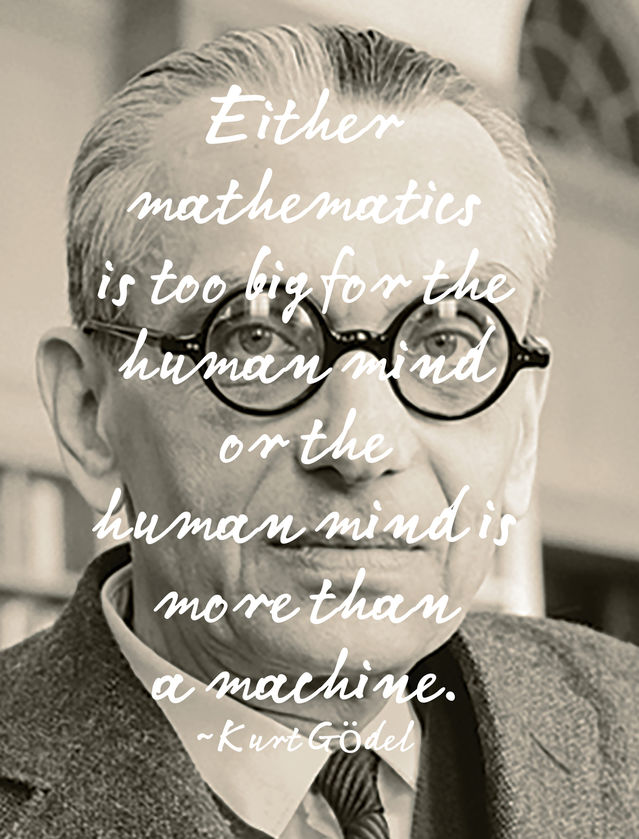
The exceptional intelligence required for genius-level contributions to mathematics may not just optimize divergent thinking. It may also delay or prevent mental illness in those who are susceptible, at least for a significant period of time. Among men, the typical age of onset of schizophrenia or other psychotic spectrum disorders is in the late teens or early twenties. Yet Grothendieck, Newton, and Nash did not demonstrate thinking that could be characterized as delusional or psychotic until later in life: Nash at 30, Newton and Grothendieck well into midlife. From a neuronal perspective, the normal process of demyelination that begins in the mid-forties leads to a weakening of executive networks that are neuroprotective, explains Jung. Myelin function impacts processing speed, which is a key individual difference in intelligence, "it makes sense that someone who is highly intelligent and has a propensity to mental illness might begin to experience symptoms in this age range."
Carson believes that these men were initially protected from illness not only by their brilliance but also by their drive to create.
This idea is echoed in the words of Pierre Cartier, among Grothendieck's most accomplished contemporaries, who wrote that while he wished to avoid diagnosing his peer, he nonetheless considered Grothendieck's output a buffer in his precarious mental state. "His capacity for scientific creation was the best antidote to depression, and the immersion in a living scientific milieu (Bourbaki and IHES) helped this to take place by giving it a collective dimension."
It has been said that the ultimate mathematician is one who can see analogies between analogies. Such was the case for Grothendieck. He used metaphors, often of buildings, such as la belle demeure parfaite (the perfect mansion), to describe the solutions he sought. This is captured even in the language used by others to describe Grothendieck's work: "Mathematicians like to walk along narrow little paths in unknown landscapes, looking for beautiful scenery or just for precious stones, but [Grothendieck] started by building a highway," wrote Valentin Poenaru, a mathematician who knew him well. "Where some might build an acrobatic bridge between two distant mountain tops, he would just fill up the space between."
Might the twin poles of ultramechanistic and ultracreative thinking be the variables needed for mathematical genius in particular? As Carson sees it, "People who have cognitive disinhibition added to high systematizing ability 'see' systems that others cannot see— visions interlocking and put together."
It is worth considering how autistic traits might play out in mathematical genius, (as opposed to in computational savantism, which could be described as high intelligence devoid of creativity). Indeed, a contemporary theory of mental abilities and talent specialization arrives at the same conclusion about genius as do creativity researchers Carson and Jung.
The diametric theory of mind draws on evidence from imprinting, the differential expression of maternal and paternal genes, to explain how autism and schizophrenia are poles on one cognitive continuum. In this picture, paternal gene expression pushes towards mechanistic thinking (autism at its most extreme), and maternal genes produce mentalizing traits, with psychosis the psychopathological end point.
This theory, put forth by sociologist Christopher Badcock and evolutionary biologist Bernard Crespi over the last decade, is supported by what is now known of epigenetics—ways in which genes are either expressed or silenced. When maternally derived genes for cognition are expressed, empathizing and mind-reading abilities flourish, often at the expense of mechanizing abilities. Conversely, paternally derived genes contribute to mechanistic cognition or even to autism spectrum disorders.
The theory makes one key prediction that brain imaging and molecular genetics may someday ratify—that epoch-making minds, likely including Nash's and Newton's, exhibit both hypermechanistic and hypermentalizing extremes. These men were both autistic and schizophrenic—double outliers. "True genius in any field of endeavor [may rely on] a mind that is not merely more or less balanced between autistic and psychotic but actually represents an overdevelopment of both," postulates Badcock in The Imprinted Brain.
It is important to bear in mind that the so-called negative symptoms of schizophrenia, including blunted or inappropriate affect, may resemble symptoms of autism. Nonetheless, as young men both Nash and Newton behaved in ways consistent with autism spectrum disorder. Nash was described as odd and emotionally isolated—but palpably brilliant. A graduate school recommendation was but one line: "He is a mathematical genius." The trajectory of his schizophrenia was unusual. At 30, at the height of his mathematical abilities, he became floridly psychotic and withdrew to the care of his family and assorted hospitals for a quarter-century, only to re-emerge in his mid-50s, the illness having largely remitted.
Tellingly, Nash wrote that a first sign of improvement was his abdication from political obsessions of the type that plagued Grothendieck. In a biographical sketch for the 1994 Nobel Prize committee, he explained that his remission was not wholly welcome, because a scientist's mechanistic rationality alters his "sense of himself relative to the cosmos."
High intelligence is a protective factor in those with a genetic predisposition to develop schizophrenia, and the ability of Nash's brain to control symptoms of the disorder might have derived from his superior executive function. Genius, autism, and schizophrenia are all so rare that no firm data can be marshalled to test the interplay of these anomalies. Biography is a critical tool at present, much as scientists generally eschew it. Ultimately, understanding the genetic architecture of these conditions will illuminate the variation in individual trajectories and explain why schizophrenics are more likely to be cognitively disabled than creatively endowed. It is surmised that highly creative individuals possess only part of the schizophrenic genotype.
Isaac Newton was always withdrawn, and many biographers have suggested that he would today be placed on the autism spectrum. He suffered from psychosis and persecutory delusions in his fifties and overpowering spiritual obsessions thereafter. John Maynard Keynes argued that Newton's papers on alchemy, a "queer collection" amounting to thousands of pages, are ultimately his life's work, more important to him than were his singular tours of astronomy, physics, and mathematics. He wrote more than a million words on alchemy and biblical prophecy. So obsessed was the father of the scientific revolution with these subjects that Keynes ultimately concluded that Newton was "not the first of the Age of Reason [but] the last of the magicians."
Math and mysticism, reason and magic are diametrically opposed interests in most individuals. But the lives of some mathematical geniuses seem to arc from mechanistic to mentalistic obsessions. Newton's convictions about alchemy and astrology are hypermentalistic in that they imbue inanimate matter, from base metals to stars, with esoteric and message-laden properties. Jung's and Badcock's belief that genius resides in some synthesis of these polarities is supported by an understanding of the manner in which regions of the brain communicate in creative individuals.
Cognitive disinhibition is integral to the creative process: It underlies loose, associative thinking as well as the inability to filter out seemingly extraneous information. This type of thinking occurs when the executive control network, responsible for higher-order cognitive tasks, ramps down in favor of the default mode network. This brain network is active in the absence of explicit attentional goals; it comes online when daydreaming or parsing the minds of others—which accounts for its dominance in mentalistic thinking. Imaging studies confirm that both highly creative individuals and those at risk for psychotic spectrum disorders exhibit unusual patterns of connectivity between the two networks.
The default network and the central executive network normally operate in dynamic tension, a hallmark of mental health as well as of high IQ. Anthony Jack, a neuroscientist who studies these regions in his Brain, Mind and Consciousness Lab at Case Western Reserve University, explains that "creativity is the only desirable area in which the seesaw is disrupted. During 'aha' moments you have engagement of both. Genius comes from blending the two sides. The problem is managing that blend while maintaining stability."
After resigning from Bourbaki to pursue his eco-conservation projects, Grothendieck began a retreat from mathematics and from society that was more pronounced with each passing decade. His written correspondence remained convivial, but by the late 1970s, it was increasingly incongruent with his actual behavior. Following a 1978 visit from his half-sister Maidi, he wrote, "The reunion was amicable—almost a rediscovery. That probably comes with the well-known serenity of age—I am now already half a century old and feel correspondingly wise." But as Maidi's daughter later recounted, Grothendieck exploded with rage after Maidi read a series of letters that he had explicitly asked her to peruse, kicking both women out of his home and accusing Maidi of invading his privacy.

It was in seclusion in the town of Villecun, where Grothendieck lived prior to his flight to Lasserre, that he began his thousand-page treatises excoriating colleagues and extolling the interconnectivity of all things. Reapings and Sowings, completed in the late 1980s, is his most widely studied text, one he called a "mathematical phantasmagoria." The work blends biography, math, and freeform musings. "With my auspicious 'departure,' I put an end to my long stagnation," he wrote of his resignation from IHES, "and took the first step towards balancing the forces in the depths of my being that were intertwined and fixed in a state of intense and rigid imbalance."
Later writings, such as The Key to Dreams, are even more discursive: sections embedded within sections and footnotes that spawn entirely new lines of inquiry. The mind that mapped abstract space in a manner none could fully fathom approached his writing with a messianic sense of purpose. And yet, unlike the math, the import is often inscrutable. "It seems almost impossible that all...or even a large portion of this, could be of importance," wrote Winfried Scharlau, who is working on a four-volume biography of Grothendieck. Some 100,000 pages of notes were found after his death, and they have triggered legal battles and injunctions already. (Grothendieck had made it clear that he did not want his remaining work circulated.) In May of this year, the University of Montpellier struck an agreement with his estate to publish never-before-seen notes, most of them from the 1960s and 1970s.
Those afflicted with psychotic spectrum disorders can retain their own optic on the universe; it is just warped by the force field of disordered thought. Grothendieck's search for "form" above all else in math endured, but was slowly transmuted into a search for form and signal in all matter. A hallmark of Grothendieck's hypermentalistic thinking was his idea that the environment was a sentient being in need of protecting. He nursed tiny shoots collected in his garden, bringing them indoors to tend individually. Toward humans, though, he was more mercurial. The rigidity that once drove him to take principled stands on matters large and small calcified into paranoia and rage.
In the mid-1980s Grothendieck agreed to meet Roy Lisker, an American mathematician keen on writing about him. When Lisker arrived, he found Grothendieck dressed in medieval peasant's garb, missing a number of teeth, and enraged at Le Monde for changing three words in an editorial he'd submitted. "How dare they perform this censorship?" he wailed to Lisker. He wanted them to reprint his original piece in full, with an apology. He believed himself to be in communication with Plato and Descartes, and even with God himself. The belief in signal transmission is a signature psychotic delusion.
The mathematicians who remember Grothendieck today prefer to recall him at the height of his powers. But to acknowledge that he unravelled is to denigrate nothing, not even his later writings, which, to quote from his beloved Moby Dick, offer "Glimpses...of that mortally intolerable truth; that all deep, earnest thinking is but the intrepid effort of the soul to keep the open independence of her sea."
Grothendieck embodied some property emergent from his powers of mechanistic and mentalistic thinking, but finally distinct from each. When the molecular signatures of brilliance and psychopathology are better understood, new terminology for minds such as his may be in order. To call Grothendieck a mad genius might ultimately be as reductive as calling Charles Darwin an anxious, observant mariner—technically true, but missing a larger truth. The real mad genius paradox may be that it takes an aberrant mind to see the fundamentals of nature as they have always existed.
Submit your response to this story to letters@psychologytoday.com. If you would like us to consider your letter for publication, please include your name, city, and state. Letters may be edited for length and clarity.
Pick up a copy of Psychology Today on newsstands now or subscribe to read the the rest of the latest issue, including the following:
Grothendieck's Life: A 20th-Century Odyssey
As a child Grothendieck fled Nazi Germany. As an adult, he attained mathematical prominence worldwide before entering a decades-long seclusion in the Pyrénées.


